Italy’s Lush Essential Oils Connect August 17, 2022
Mark Sewell and Gaëtan Bourdeau
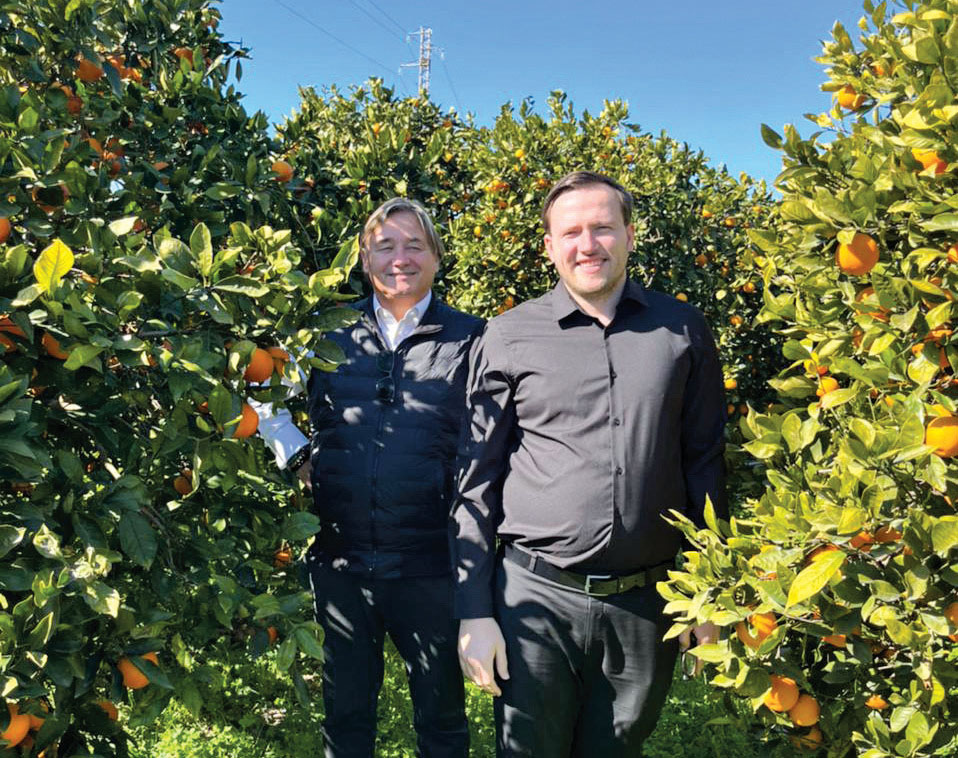 Southern Italy is a treasure trove of well-manicured trees, bursting with citrus fruits. Here, experience merges with innovation to produce the purest range of nature’s elixirs. Being a major producer of essential oils in Europe, it has a wealth of knowledge and generations of experience to share. It is always an “essential” connect. To gain an intimate knowledge of the production and trading of essential oils in southern Italy, we embarked on a 6 day study tour. The primary purpose of the tour was to visit citrus oil manufacturers and comprehend their challenges and deep dive into the market dynamics. This was our first such sourcing initiative in Italy. While we set out to assess suppliers and develop business relationships, during the course of these excursions, we also learnt a great deal about:
Southern Italy is a treasure trove of well-manicured trees, bursting with citrus fruits. Here, experience merges with innovation to produce the purest range of nature’s elixirs. Being a major producer of essential oils in Europe, it has a wealth of knowledge and generations of experience to share. It is always an “essential” connect. To gain an intimate knowledge of the production and trading of essential oils in southern Italy, we embarked on a 6 day study tour. The primary purpose of the tour was to visit citrus oil manufacturers and comprehend their challenges and deep dive into the market dynamics. This was our first such sourcing initiative in Italy. While we set out to assess suppliers and develop business relationships, during the course of these excursions, we also learnt a great deal about:
- Product and processing innovations and extraction equipment upgrades
- Technical advances in analysing essential oil constituents
- Growing interest in organic essential oils and their required certification
- Expanding scope of citrus speciality products
- Agronomic techniques and traceability
- Impact of EU health and safety regulations on production
- Impact of EU subsidy reduction on citrus fruit market liberalisation
- Growth of the fresh fruit market
- Purchasing arrangements with local producers
ITALIAN CITRUS
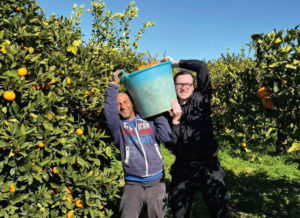 As early as the 10th century, citrus fruits were introduced to Sicily. Over the years numerous varieties made their way to Sicily, and citrus production became one of the driving forces of the local economy. Today, Sicily is the leading producer of blood oranges globally, and a major contributor of lemons. Sicily also produces premium quality mandarins, clementines and oranges Amare. The climatic conditions, and geographical location of Sicily favours the production of citrus fruits.
As early as the 10th century, citrus fruits were introduced to Sicily. Over the years numerous varieties made their way to Sicily, and citrus production became one of the driving forces of the local economy. Today, Sicily is the leading producer of blood oranges globally, and a major contributor of lemons. Sicily also produces premium quality mandarins, clementines and oranges Amare. The climatic conditions, and geographical location of Sicily favours the production of citrus fruits.
A HANDS-ON EXPERIENCE AT PRODUCTION PLANTS
To understand product and processing in detail, we visited numerous family-owned organisations with decades of experience in the sector. During these visits we intimately understood the operation style.
We witnessed the oil extraction process starting from unloading and washing fruits. We also got a first-hand look at the equipment used in these operations. Most plants in the area used the rasping technique to obtain oil from the peel. This process is referred to as pelatrice, while removing oil after the juice is expressed is known as sfumatrice. During these visits, we quizzed producers on the chemical and organoleptic characteristics of oils obtained via different techniques. These conversations shed a light on the wide product range of lemon, blood and blond sweet orange, mandarin, and bergamot oils produced in Italy.
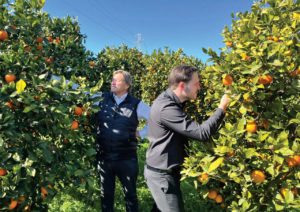 The visits also highlighted the increased quality control measures enforced at the production plants. We witnessed the intense scrutiny at every stage from growing, transport, arrival at factory to processing technology, production control, and sophisticated laboratory testing. Everywhere highly skilled staff was employed to oversee these operations. Most companies complied with international guidelines such as ISO 9001, HACCP, and Good Manufacturing Practice.
The visits also highlighted the increased quality control measures enforced at the production plants. We witnessed the intense scrutiny at every stage from growing, transport, arrival at factory to processing technology, production control, and sophisticated laboratory testing. Everywhere highly skilled staff was employed to oversee these operations. Most companies complied with international guidelines such as ISO 9001, HACCP, and Good Manufacturing Practice.
EXPLORING THE ITALIAN LANDSCAPE
Palermo
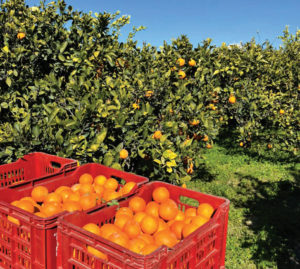 Our journey commenced in Palermo. A cultural melting pot at the edge of Europe, Palermo proudly wears the scars and glory days of its ancient past. Sicily’s largest city offers the art lover the opportunity to scan youthful artisan studios. It is home to the third largest opera house in Europe, noisy streets with an abundance of food varieties, and historical relics with proud Arabesque domes and frescoed cupolas. Here we visited lemon and blood orange farms. One of the first stops in Palermo was an institution with a rich history and legacy. They specialise in processing and manufacturing citrus oils for perfumery, cosmetics, pharmaceuticals, and food and beverage industries.
Our journey commenced in Palermo. A cultural melting pot at the edge of Europe, Palermo proudly wears the scars and glory days of its ancient past. Sicily’s largest city offers the art lover the opportunity to scan youthful artisan studios. It is home to the third largest opera house in Europe, noisy streets with an abundance of food varieties, and historical relics with proud Arabesque domes and frescoed cupolas. Here we visited lemon and blood orange farms. One of the first stops in Palermo was an institution with a rich history and legacy. They specialise in processing and manufacturing citrus oils for perfumery, cosmetics, pharmaceuticals, and food and beverage industries.
Catania
Our next stop was Catania. Under the shadow of Mt. Etna is the vibrant and youthful city of Catania. It has a remarkable history and story of resilience. Rebuilt with lava after the devastation in the 17th century, today it has an earthy spirit and young vibe. We explored bergamot and blonde orange farms as well.
Messina
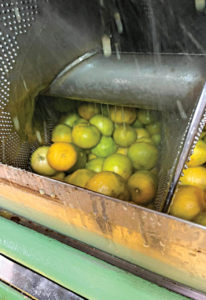 Next up on our itinerary was Messina. Located in close proximity to mainland Italy, Messina is a major transport hub and an important gateway to the island. It is home to one of Sicily’s finest cathedrals and museums. We visited some processing plants in this area. Situated close to the beach, it was impressive how these plants overcame challenges of accessibility. It possessed the latest equipment, and sound-proofing for smooth operations.
Next up on our itinerary was Messina. Located in close proximity to mainland Italy, Messina is a major transport hub and an important gateway to the island. It is home to one of Sicily’s finest cathedrals and museums. We visited some processing plants in this area. Situated close to the beach, it was impressive how these plants overcame challenges of accessibility. It possessed the latest equipment, and sound-proofing for smooth operations.
(In Reggio Calabria) We visited a plant where we were able to witness pelatrice extraction of citrus fruits.
We also made a stopover at the University of Messina, Analytical Food Chemistry Group. The trip proved to be extremely beneficial in understanding the latest innovations in the European market. The EU has funded analytical laboratories at the university. They are constantly innovating to analyse essential oil constituents and detect adulterations and pesticide content.
Reggio Calabria
We concluded our Italian sojourn at Reggio Calabria with a short ferry ride. A seaside town popular for its cultural sights, Reggio Calabria is often referred to as the ‘jumping off point for Sicily.’ Buzzing with Greek history and relics, the seafront possesses remains of Roman baths and Greek walls. We visited a plant where we were able to witness pelatrice extraction of citrus fruits.
The short trip to the interior of Sicily was a fruitful, educational, and exhilarating experience. The beauty of the orchards and fields, the landscapes, and interactions with industry veterans, locals, and generations of family-owned businesses were enriching. Our understanding of essential oils in general, and the Italian market particularly, is sharper. With this knowledge we hope to service the Italian demographic better. It will also be our endeavour to market Italy’s rich product line globally.
 Ultra International B.V.
Ultra International B.V.